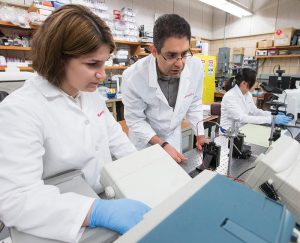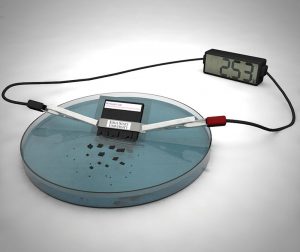
A practical solution for powering transient electronics
Researchers at Iowa State have made significant progress in an effort to make transient electronic devices completely autonomous.
Reza Montazami, an assistant professor of mechanical engineering and an associate of the U.S. Department of Energy’s Ames Laboratory, is leading a team that has developed a transient lithium-ion (Li-ion) battery that offers nearly the same voltage as commercial products and can disintegrate in 30 minutes.
These transient batteries, and the materials research and structural design behind them, will be crucial as the field of transient
electronics continues to grow.
“Devices that operate for short, defined periods of time and then self-destruct can be used in a range of applications, from healthcare to military and homeland security,” Montazami explains. “They offer a great deal of promise, but they currently still rely on an outside, non-transient, power source. If we can change that, we can make the devices even more beneficial.”
And that’s exactly what Montazami has set out to accomplish.
He and his team have combined Li-ion battery technology with a new physical–chemical hybrid transiency approach that breaks down a battery and dissolves its electrodes.

“The casing for the battery uses polymers that swell when immersed in a liquid, causing the nanocomposite electrodes to break and disperse,” he explains. “Because the battery is designed to disintegrate both chemically and physically, it is very difficult to trace back to the owner even if the device were still physically present.”
At this point, the batteries are 5 mm by 6 mm, and 1 mm thick and can power a desktop calculator for approximately 15 minutes. And while they don’t completely disappear, Montazami says he will continue experimentation to advance the technology because of the value it could bring to even mainstream electronics.
“If we look at the bigger picture, we could see a consumer battery that could be dissolved once a person was done using it instead of that battery ending up in a landfill,” he adds.
The team is continuing to study the physical–chemical hybrid transiency platform to improve understanding of what interactions are at play. The group is also working to improve the performance of the battery for devices that use more power. That could mean making electrodes with higher area density or finding ways to connect several batteries.